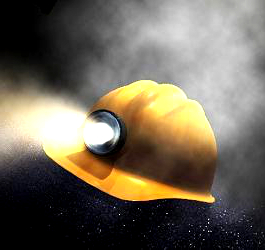DMP urges deeper view
 The WA Government says key performance indicators (KPIs) could reduce mining industry fatalities.
The WA Government says key performance indicators (KPIs) could reduce mining industry fatalities.
A new analysis of serious mining injuries conducted by the WA Department of Mines and Petroleum says mining companies should track the number of serious injuries and near-miss accidents to management performance.
The report found that identifying and attacking the causes of serious injuries would more likely reduce mining fatalities than the usual measures of overall safety performance.
Companies typically use the frequency of lost-time injuries or restricted work injuries as a key performance indicator to help calculate bonuses for staff and management.
But the DMP report suggests those measurements may shed light on overall safety standards, but are less useful in allowing companies to actually reduce the number of fatalities.
The WA mining industry average two to three deaths a year, according to Mines Minister Bill Marmion.
“While injury rates have continued to drop, the trend for serious and potentially fatal injuries has now flattened,” he said.
“The risk profiles identified in the review will help the industry better understand how to avoid dangerous and sometimes lethal workplace risks.”
The report, which covered 658 serious injuries in the six months to December 2013, says closer attention to the serious subset of injuries is needed.
“A KPI based on the incidence rate for amputations, fractures and crush injuries (AFC) has potential as a lead indicator to measure the effectiveness of fatality-prevention strategies,” the report said.
The data gave the surprising finding that a mining companies’ own employees have a higher risk of serious accidents than its contractors.
“Workers employed [by] a principal employer had more than double the number of serious injuries compared with contractors,” the report said.
However, it found that when companies look at fatal accidents alone, contractors are over-represented.








 Print
Print